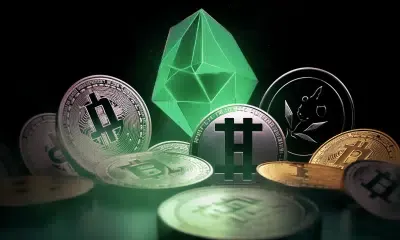Ethereum 2.0 Development: Next Generation Ethereum Network
Get insights into Ethereum 2.0 development and how to build on the next-generation Ethereum network. This article covers the technical features, tools, and best practices for developers.

Ethereum 2.0 represents the next generation of the Ethereum blockchain, which aims to address most of the issues encountered in the first version. These issues include security vulnerabilities, scalability, and energy consumption. As a Web3 or blockchain developer, familiarizing yourself with Ethereum 2.0 development should be a top priority.
As a developer, you have the opportunity to build on this new and improved blockchain platform, taking advantage of its improvements, including scalability, security, and interoperability with other blockchains. This article provides everything you need to know about Ethereum 2.0 development, including how to get started and the tools necessary to develop and deploy apps on this new platform.
Technical features of Ethereum 2.0

Ethereum 2.0 technical features – Image via Pixabay
Sharding
This feature aims to solve the scalability issues with the first generation of Ethereum. Sharding involves breaking the Ethereum blockchain into smaller partitions called shards. Each of these portions has the capacity to process transactions and execute smart contracts independently of the other shards. With this improvement, Ethereum 2.0 will be able to process up to 100,000 transactions per second.
Proof of Stake
This replaces the old proof of work transactions validation mechanism the first version of Ethereum was using. With proof of stake, transaction validators are selected based on the amount of cryptocurrency they own and “stake” to the network. It does consider the computing power of the mining machines. This helps reduce energy consumption and also lower transaction fees.
EVM compatibility
EVM stands for Ethereum Virtual machine, which is a runtime environment for smart contracts in Ethereum. With this new upgrade, EVM will remain the same, allowing developers to use the same programming languages and development tools that were already with Ethereum 1.0.
Upgradability
With Ethereum 2.0, the Ethereum community is putting more emphasis on ensuring upgrades on the platform are as seamless as possible. The upgrade process will happen in stages, each introducing new features and improvements to the network without disrupting operations.
Getting started with Ethereum 2.0 development
In this section, we will discuss some of the most important things you need to know when getting started with Ethereum 2.0:

Getting started with Ethereum 2.0 development – Image via Freepik
Setting up a development environment
The first thing you will need to do is to set up a development environment on your local machine. Setting up a development environment requires installing all the necessary tools and software, such as a code editor, a package manager, and a node.js runtime environment.
You must also install an Ethereum 2.0 client. The Ethereum 2.0 client will allow you to interact with the blockchain network. Some of the best Ethereum 2.0 clients you may consider include Prysm, Lighthouse, and Teku.
Choosing a programming language
One of the benefits of the Ethereum 2.0 blockchain is that it supports several programming languages, including Solidity, Vyper, Rust, and Go. However, Solidity is still the most popular for Ethereum development.
Solidity is specifically designed for writing smart contracts, which makes it the best option for most developers. Vyper is slowly gaining popularity thanks to its simplicity and security features. Rust and Go are also good options for developing decentralized applications.
Interacting with the Ethereum 2.0 network
After setting up your development environment and choosing the language you will use, the next step is interacting with the network. You will use your Ethereum 2.0 client to interact with the network, send transactions and messages, and deploy smart contracts. You will also need other development frameworks and tools like Truffle, Remix, or Hardhat to streamline the development process and test the apps you will build.
Tools and resources for Ethereum 2.0 development
When creating apps and smart contracts on the Ethereum 2.0 blockchain, there are some development tools and resources you will need. Some of the crucial ones include the following:

Ethereum 2.0 development – Image via Unsplash
Ethereum development tools
These tools provide an integrated development environment (IDE) that you will need to build apps, test smart contracts and deploy and interact with them on the network. They also enable several other features, including debugging tools, automated testing frameworks, and contract verification.
Some Ethereum development tools you may consider include Remix, Truffle, Mist, Ganache, Hardhat, and more. It should be noted that most of these are the same tools developers used with the first generation of the Ethereum blockchain.
Smart Contract development frameworks
Smart contract development frameworks provide a more comprehensive suite of tools you will need to build decentralized applications on the Ethereum 2.0 blockchain. Some of the common frameworks include Embark, Brownie, and DappHub.
With these frameworks, you can write, test, and deploy smart contracts and decentralized applications (dApps) using a variety of programming languages, including Solidity, Vyper, Rust, GO, and more.
Ethereum 2.0 documentation and community resources
As a developer, you must have a copy of the Ethereum 2.0 documentation. It is a great resource for learning more about the new features and improvements introduced in Ethereum 2.0. The documentation includes technical specifications of:
-The platform
-Whitepapers
-Other guides that provide detailed information about the network architecture, its capabilities, consensus mechanisms, and more.
Besides the documentation, you will also often need the help of the Ethereum development community. One of the advantages of the Ethereum network is its vibrant development community. You can engage with fellow developers in the Ethereum community on online forums like:
-Chat rooms
-Social media groups
Final thoughts
The introduction of Ethereum 2.0 represents a major milestone in the evolution of the Ethereum blockchain. It has several new features and improvements to help developers create decentralized apps and smart contracts much faster. These improvements and features will also boost the security and scalability of decentralized apps and smart contracts running on the Ethereum blockchain.
To get started developing apps on this next generation of Ethereum, it is necessary to:
-Set up a development environment
-Choose a programming language
-Interact with the network using an Ethereum 2.0 client and development tools.
By leveraging the aforementioned tools and resources, you can play a crucial role in the ongoing development of the Ethereum 2.0 network.




